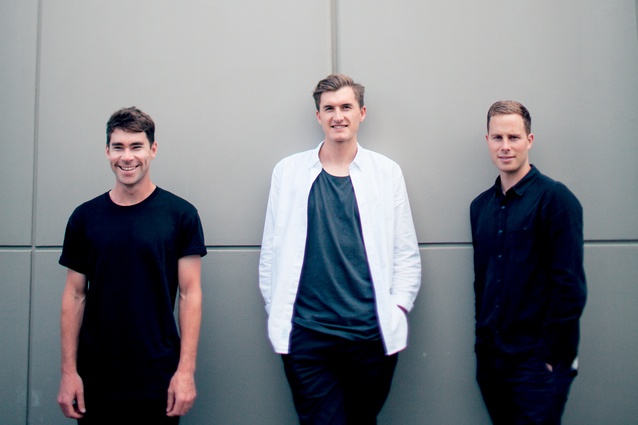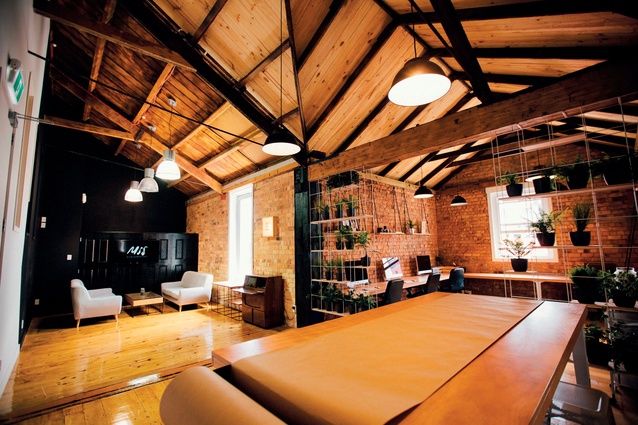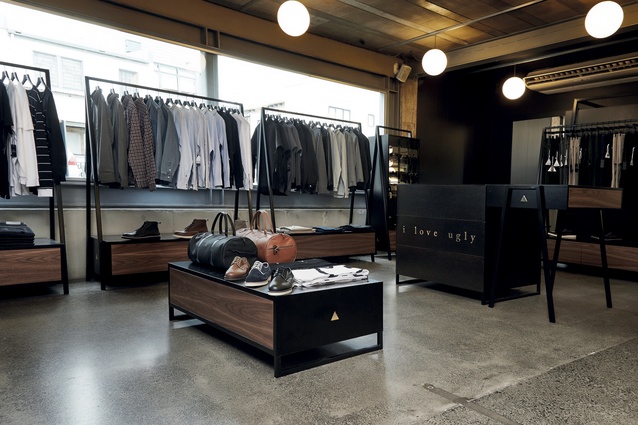Designer interview: Think & Shift
Think & Shift is a fresh-faced, holistic and forward-thinking design studio, based in Auckland. Clients range from fashion brands and manufacturers through to hospitality providers. Federico Monsalve caught up with the young guns about designing a common room for students through to imagining the future of craft.
Interior: The Home Social Space for students in Christchurch is based on a multi-use concept… tell us about it.
Sam Griffin (SG): The client wanted something that provided an educational and entertainment space for on-campus students. We developed a survey to ask what exactly those students required: what they wanted in there because they’re the direct customer so that’s who we should be designing for.
James McNab (JM): The survey provided some really good insights. A simple thing like ‘more power plugs’ was number one on the list. Then there was the idea of incorporating a space where people could work independently, or in teams, but then at night also use it as an event space. It needed to have all these different facets and [the space] had to change function throughout the day.
SG: So you have these three juxtaposing activities; they all need to work together as one cohesive space. It’s got this intense bar area but then, next to it, you have this soft lounging area with commercial fabrics and then you also have this little corner which is secluded and away from everything else.
Interior: How do you address the fact that the students are going to be changing every year? How do you keep it fresh and relevant?
SG: The people that we surveyed ranged from second-year students right through to PhD so already you’ve covered four to five years of transition. We hope the information that we gathered from all of them will kind of reflect what it’s going to be like in the future. But you’ve got a good point. I think the space that we created now is a timeless space but it is a space that is there to capture attention and create impact for the market because it’s the first of its type in New Zealand. The client really wanted to make a big splash with this and they wanted, in a way, to showcase what they can do.
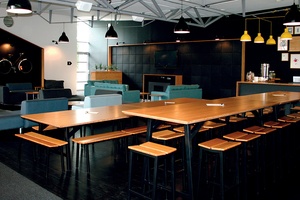
JM: They are hoping to duplicate the concept around the world. The client is heavily involved [in similar student accommodation ventures] in Australia, the UK, Canada and the US as well; so they have places around the world, but this concept hasn’t been done before.
Interior: If you know that this concept is something that, potentially, is going to be sent to other countries, does that affect your design process? Do you have to think ‘okay I’m going to have to leave this slightly flexible so that it fits in other cultures’?
SG: Yeah, for sure. Everything that was designed in that space was contextual to a degree. The whole ‘home’ feel of the space originated from the students there. They said that they lacked a sense of home on campus.
JM: It was a home away from home. But then obviously that concept can be replicated anywhere in the world but we’d like to think that the requirements and the details of the space would be contextual, and would derive from what the students in that particular country area need, or view as ‘home’.
SG: It was a very different university upbringing to what we experienced. But another thing is, I guess, contextually the location defines your ratios. So if you have those three key areas – study, common room and bar – you might adjust those ratios differently for the requirements of the location.
Interior: Did you use some of your own furniture as well?
SG: We designed the majority of the furniture but we specified some stuff that was basically at the right price and serving the requirements for the space. Things like bar leaners, stools, benches, coffee tables.
JM: It was almost like two projects in one: a furniture design challenge and then, also, a spatial fit-out. But we design holistically so it’s really important to us that we design all touch points. We even designed or helped design the brand image. We worked with a graphic designer to generate what everything looked like graphically. So we had something of a hold on every point.
Interior: What was the biggest learning curve in this process?
JM: For me, it was learning how a big corporate company operates and learning how to be strategic within that context. At one point, we had the whole international team getting involved with the concept: with the idea, with the design. Then we had to pretty much do a full 360 and stick with the original concept and stick with the New Zealand team to achieve the concept and the design and actually get it done.
Interior: I guess that sort of leads us well into your furniture design.
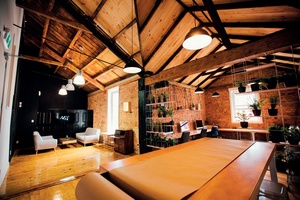
JM: We have two brands that operate. One is Y.S Collective; we do limited edition furniture through that – so, pieces that explore new materials, explore new processes, push boundaries. We’re not set up to make a financially viable business from that. It might make money and it might succeed that way; but that’s not the main goal. It’s purely to explore. From those learnings, we translate that over to Think & Shift which is I guess our more commercial side of things.
Interior: So like a research and development wing.
JM: Yeah, and also our design playground to a certain degree.
Interior: What products have come from Y.S Collective?
SG: We have a product that is about to be released: handcrafted jade with 3D-printed titanium. So there’s a real juxtaposition. One of New Zealand’s most modern manufacturing techniques and materials, and one of the most traditional techniques and material, working together in one piece. It’s part of the future of craft series that we’re about to release.
Interior: And if there were one project that you guys could work on, if there were a sort of ideal commission, what would it be?
SG: I’d love to keep going down the artistic route and doing a lot of installations and I guess explorative furniture stuff that really gets exposure and then can compete internationally on the world stage.
JM: I want to work with ‘punch’ brands: people who have a bit of attitude and want to make the biggest impact possible in terms of a product or a space. Not a brand that’s there to be mundane and everyday: someone who really wants to make a point of difference, and that’s our strong point. We create a really large point of difference with any project we do.

